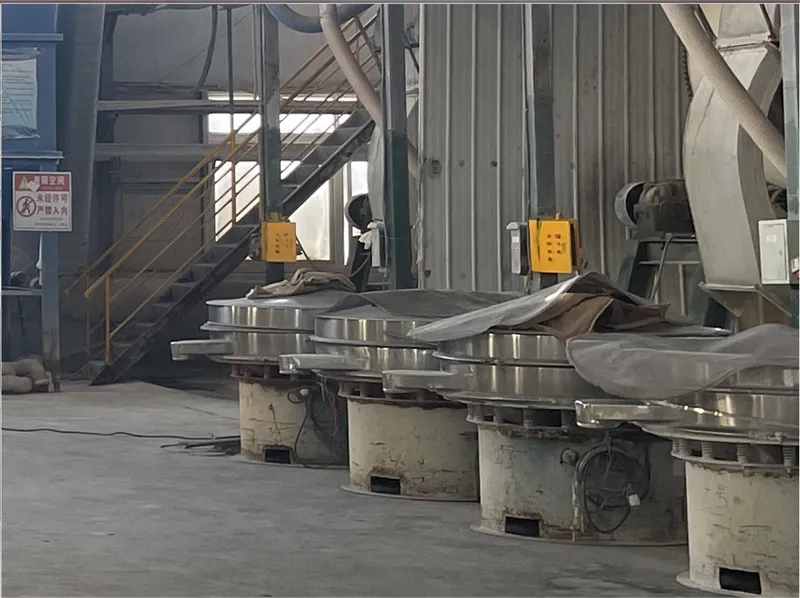
Melamine Packaging
Tech Blog Melamine packaging For manufacturers, inaccurate packaging not only fails to meet national standards but also increases labor costs and the risk of product


Melamine molding compound (MMC) powder is a thermosetting resin widely used in tableware, electrical components, and automotive parts due to its durability, heat resistance, and aesthetics.
This article provides a comprehensive overview of the production process, technical considerations, and quality control measures for how to produce melamine molding compound powder.
Melamine (C₃H₆N₆): Purity≥99.8%; Particle size 80-120 mesh, evenly dispersed.
Formaldehyde (CH₂O): Concentration 37-40% aqueous solution. Stabilize with methanol (6-12%) to prevent polymerization.
Alpha cellulose: Enhances mechanical strength (10-20% by weight).
Talc powder: Improves mold flow and reduces friction (5-10%).
Pigments: Heat-stable organic/inorganic dyes (such as titanium dioxide used for whiteness).
Urea: Adjust resin viscosity and curing speed (optional, 2-5%).
Sodium hydroxide (NaOH): Control the pH value (pH 8.5-9.5) during condensation.
Lubricant: Zinc stearate (0.5-1%) is used for demolding.
Key requirements:
Melamine purity ≥ 99.8%, avoid impurities.
Formaldehyde solution must comply with food-grade standards (such as EU 10/2011).
The particle size of the filler should be uniform.
Condensation reaction:
Mix melamine and formaldehyde in a molar ratio of 1:2.5-3.0 in the reactor.
Heat to 75-85°C with stirring and maintain for 30-45 minutes.
Add NaOH to maintain a pH of 8.5-9.0 and promote hydroxymethylation.
Aggregation:
Raise the temperature to 90-95°C to form hydroxymethylmelamine intermediate.
Continue the reaction until the viscosity meets the standard (measured by a Brookfield viscometer).
Neutrality and stability:
Cool to 50°C and add urea to neutralize excess formaldehyde.
Stabilize the resin with 1-2% boric acid to extend its shelf life.
Dry mix:
Mix the resin with fillers (alpha-cellulose, talc powder) in a high-speed mixer (500-800rpm) for 10-15 minutes.
Ensure even distribution and prevent clumping.
Wet mixing:
Add lubricant and pigment and mix at 40-50°C for 20-30 minutes.
Target moisture content:<1.5% (measured by Karl Fischer titration).
Preloading:
Send the mixture into the preform machine to form coarse particles for uniform heat treatment.
Hot pressing and curing:
Transfer the particles to a hot press and 300-400 kg/cm ² pressure, and cure for 60-120 seconds to achieve crosslinking density.
Fracture:
A jet mill or ball mill is used to crush the solidified block into powder.
Target particle size: 80-200 mesh (180-75 µ m).
Filter:
Pass the powder through a vibrating screen to remove oversized particles (>200 µ m).
Yield: 95-98% usable powder.

| Parameter | Test Method | Specification |
|---|---|---|
| Particle Size | Laser diffraction (ISO 13320) | 80–200 mesh (D50: 100–150 µm) |
| Flowability | Hall Flowmeter (ASTM B213) | 25–35 sec/50g |
| Thermal Stability | TGA (ISO 11358) | Decomposition >250°C |
| Formaldehyde Release | EN 717-3 | ≤1.5 mg/L (per 24h) |
Poor liquidity
Reason: High filler content or excessive moisture.
Solution:
Reduce alpha-cellulose to<15%.
Pre-dry the filler at 80 ° C for 2 hours.
Inconsistent color
Reason: The pigment is unevenly dispersed.
Solution:
Use a twin-screw extruder for wet mixing.
Add dispersant (such as polyacrylate, 0.1-0.5%).
Early healing
Reason: High environmental humidity or excessive catalyst.
Solution:
Store the resin in an environment with less than 30% relative humidity.
Adjust the dosage of sodium hydroxide to pH 8.0-8.5.
5. Innovation in MMC production
Biobased resin: Using lignin-derived aldehydes instead of 30% formaldehyde reduces VOC emissions by 40%.
Recycling fillers: By utilizing industrial cellulose waste, costs can be reduced by 15-20%.
Artificial intelligence-driven process control: Machine learning algorithms optimize curing time and pressure based on real-time viscosity data.
Nano additive: Nano silica (1-3%) increases mechanical strength by 25% without affecting fluidity.
Tableware: Melamine tableware, plates, and cups.
Electrical components: switches, sockets, and circuit boards.
Automotive components: interior and engine parts.
Producing high-quality melamine molding powder requires meticulous control over raw materials, polymerization reactions, and post-treatment processes. Manufacturers can produce MMC powders with excellent fluidity, thermal stability, and safety compliance by optimizing parameters such as catalyst dosage, temperature, and particle size. With the increasing demand for advanced materials, continuous innovation in MMC production remains crucial for meeting global market demands.
We provide high-quality raw materials for melamine production. Please get in touch with us if you need anything!

Tech Blog Melamine packaging For manufacturers, inaccurate packaging not only fails to meet national standards but also increases labor costs and the risk of product

Tech Blog How to Detect Melamine in Textiles? Melamine powder, a nitrogen-containing heterocyclic compound, is widely used in flame-retardant textiles and plastic products due to

Tech Blog melamine from urea Melamine is well-known for its wide range of applications, but its raw material for production is surprisingly urea. For manufacturers,

JINGJIANG MELAMINE POWDER
© JINJIANG MELAMINE